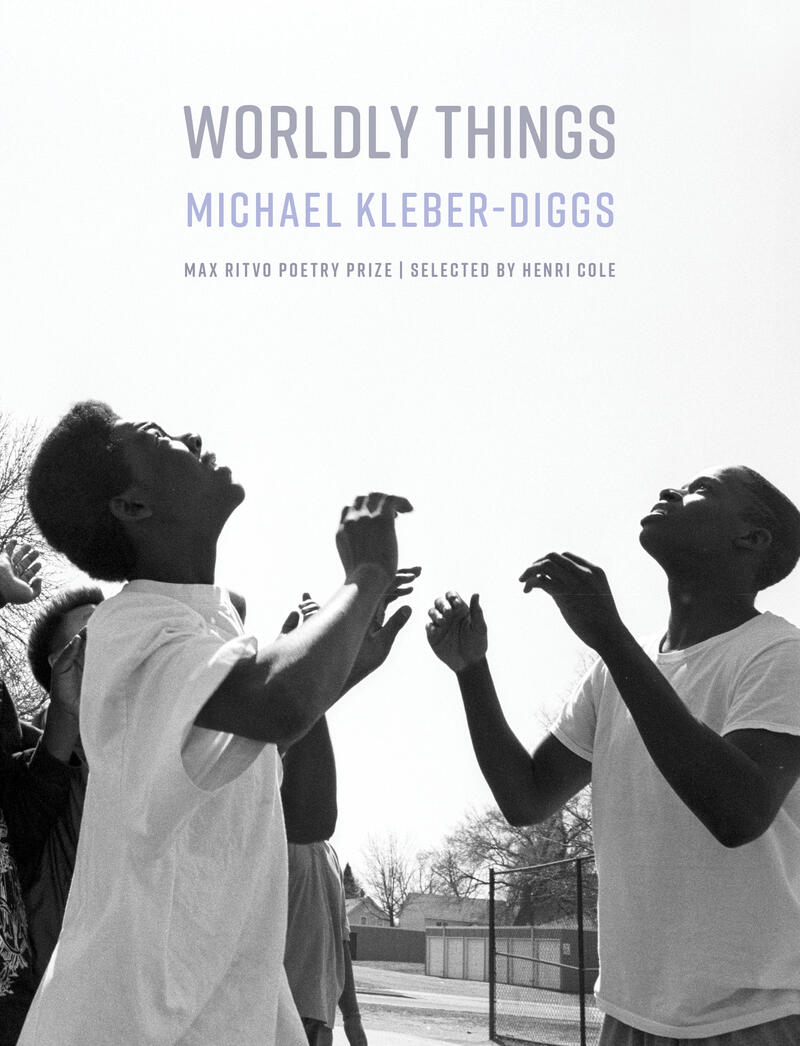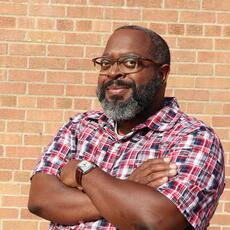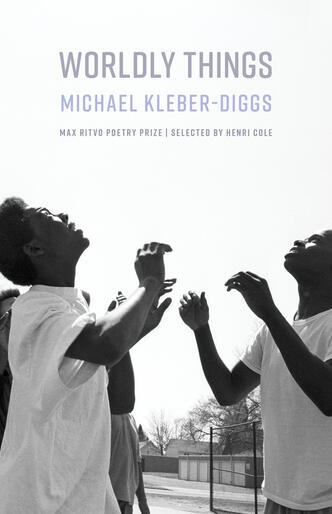The Blank Page: A Cover Image Story

The last poem I wrote is about a Black man in a blue Pontiac Vibe station wagon parked in a park for most of the day every weekday. That poem was inspired by a Black man in a blue Pontiac Vibe station wagon parked in the park across the street from my house every weekday. I see him when I take our dogs out for a walk. I saw him this morning.
By appearances, the man in the station wagon is middle aged, like me. He has a beard with plenty of grey in it, like mine, except his beard curls out longer and thicker. We both wear glasses, and sometimes I wear black glasses with heavy frames that look a lot like his. The poem began with me wondering about the circumstances that lead him to the park every day and ended with me realizing I wanted to talk about what we share in common and don’t seem to share in common. 2020 was not without difficulty for me, but most of my days are pleasant. Every morning, I walk our two Goldendoodles for fresh air and a break. By contrast, the man in the Pontiac doesn’t seem to be doing well. His Vibe wants repairs. It appears to have a lot of his possessions in it.
When I first started writing poetry, I wrote on Monday nights while my wife watched Ally McBeal. Whether I had an idea or not, on Monday nights at 8:00, I wrote a poem. I had Ron Padgett’s Handbook of Poetic Forms, and, I kid you not, if I didn’t have an idea for something to write about, I’d look up a form and try it. Here’s one thing I learned: it’s a good idea to have an idea before you start a sestina.
These days, I don’t write poems at designated times. I try to walk around open to possibilities. I start after the idea or image arrives, after I wander around with it a bit and find an entry point. For me, the distance between inspiration and entry point often takes a couple of days. Sometimes, it’s a matter of minutes. Every once in a while the inspiration is the entry point, but, however long it takes, the page isn’t blank when I sit down to write. I have a sense for where I want to begin, and, hopefully, not much sense for where I’ll end up.
I almost never confront the blank page.
Worldly Things is my first book. Associated with its publication, I am learning how manuscripts become books. I understood most of it on a theoretical level, and I’m seeing it as a practical matter now—step by step—the steps that authors can see. I understood, theoretically, that my book would have a cover and someone would design it. I suspected I’d have some input in that process. This information might have compelled me to be ready for someone to seek my input. It sure might have.
Mary Austin Speaker, the accomplished poet and talented cover artist who designed the cover for Worldly Things, sent me an email asking for my thoughts on the cover and explaining her preferred process.
Just like that, I found myself confronting the blank page. Monday night. 8:00. Write a villanelle. Write it now. Whitespace. Static. No images. No ideas. Too many images. Too many ideas. One hey-Michael-just-checking-in email. Whitespace again. Static. Prolonged moments of frustration with myself for not thinking about all this months ago. Anxious moments wondering if any idea would come. Fear that too many ideas would come. Another hey-Michael email. Back again to the whitespace. How about a tree? How about a broken watch? How about text only? I got it—let’s do a single juvenile male indigo bunting. Or maybe a river? Talk to Su Hwang. Talk to last year’s Max Ritvo Poetry Prize winner Allison Adair. Email Mary this time—preemptive strike. Email not phone call. Express contrition. Ask for help. What is step one? whitespacestatic.
As I was working on my manuscript, at one point I put a cover on one version. I visualized the outcome. I set my intentions, manifested them. The cover I chose was a photo of a tangle of branches.
I have this joke about my poetry. The joke is “one of these days, I’m going to write a poem that does not have a tree in it and in which I do not make a conspicuous appearance.” Like many jokes, there’s a little bit of truth in it, a little bit of lie. I appear in my poems a lot and so do trees (I find this funny because I can only identify a few trees by sight — oak, birch, pine, sequoia, maples in October…).
Mary said, “Look at covers you like.” So I did that.
I started a Pinterest board and put some images on it, but I am not very good at Pinterest.
I sent a list of covers I like to Mary. I talked about why I like them. I described my book-cover aesthetic like a Writer Who Has a Book-Cover Aesthetic. Some trends emerged, even as I had a tendency to say “I really like covers that do these three things” then, two covers later, express admiration for a cover that did the exact opposite of all three things.
I asked about art and using art for the cover. I learned the process Milkweed follows for that and how they reach out to artists. I sent a list of artists and images I admire to Mary— just a few. She rejected one flat out—it was awesome but had nothing to do with the book—and added a few of her own.
Both of us felt called in the same direction and drawn to the same image. We wanted to work with Wing Young Huie and use a photograph from his University Avenue Project (2007-2010), a project that resulted from years of daily photos taken in neighborhoods along University Avenue, the main street in St. Paul, where I live. In his art, Wing walks around with intention, open to possibilities. I’ve admired his work for years, and just the prospect of working with him—the idea that it was even an option—meant a lot to me. If you’re not familiar with Wing’s work, I highly recommend his website.
Among other things, Worldly Things is about a Black man enduring in an anti-Black country. I hope readers will see it as a prayer for humanity, a work in praise of resilience and, in that way, lovely. I want a conspicuously Black book; I want people to pick it up and know it was written by a Black poet and concerns the Black experience. I wanted to work with a BIPOC artist. Somewhere along the way, I was attracted to the idea of a Minnesota project, too. The Twin Cities literary community has been generous in its support of me and my work. I love being a writer here. There was something about a Minnesota poet working with a publisher based in Minnesota and a Minnesota photographer that called to me.
In Wing’s image, Black men look up toward a basketball rim you cannot see on the cover. In the original, part of the net is visible. The men are energized at play, magnificent, beautiful, vibrant, alive with anticipation, majestic in a way, holy. Mary framed it so they gaze up at the title of the book. I felt some shyness about that. She educated me on the thinking behind her decisions on cropping, placement, color, font. She told me about punctum—where the eye is drawn when first we confront an image. If you don’t know the original photo, you might not think of basketball at first, you might think of the sky, of vastness. And look, we even got a couple of trees in the background. I don’t know what kind of trees they are, but I love the network of branches fanning out, tangled as they taper, part of a complicated system—arterial, oxygenating.


